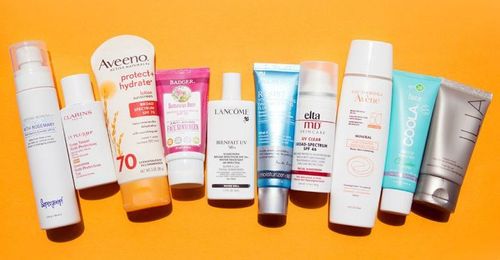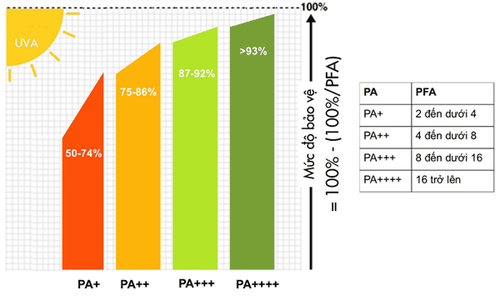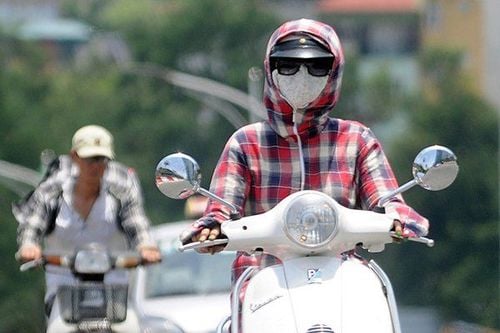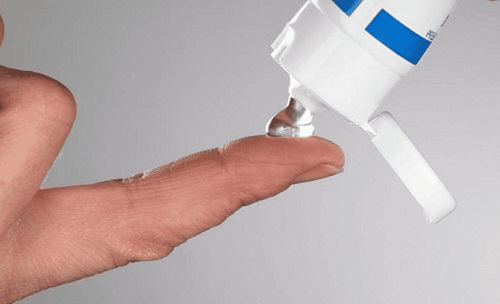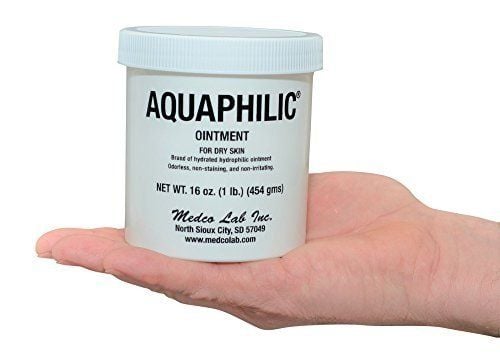This is an automatically translated article.
Heatstroke and heatstroke are common phenomena in the summer, especially during peak hot days, when the temperature rises suddenly. Heat stroke not only makes us tired, dizzy, headache ... but heatstroke can also lead to stroke.1. Concepts
Hypothermia is a preventable illness, especially in areas with high temperatures. Clinically, there are two main progressive body temperature diseases that are hypothermia and dangerous forms: heatstroke - heatstroke.
Heatstroke - heatstroke is an excessive increase in body temperature, usually above 40 degrees Celsius, often accompanied by a systemic inflammatory response leading to target organ damage along with nerve damage. What is particularly mechanistically distinguishing between heatstroke and other forms of hypothermia is the complete loss of control of the thermoregulatory center.
Heatstroke - heatstroke is divided into 2 types: heatstroke - classic heatstroke and heatstroke - heatstroke caused by exertion. These two forms differ in mechanism but the clinical picture is similar. Heatstroke - classic heatstroke is caused by exposure to a hot environment outside and leads to a core temperature above 40 degrees Celsius. The disease may progress slowly over a few days, then lead to impaired consciousness while drunk. Heatstroke - heatstroke due to exertion is common in athletes, or young people who are too active, so symptoms appear quickly within a few hours and the ambient temperature does not need to be too high.
2. Causes of heatstroke and heatstroke
2.1 Heatstroke When people work or move for too long in hot weather, especially at noon (11am - 2pm), many harsh rays of the sun will shine directly on the neck area (corresponding to the medulla oblongata). of the brain) continuously causes the body's temperature-regulating center to vibrate, disrupting the body's temperature regulation along with dehydration of the body. Therefore, heatstroke often shows severe illness from the beginning, there may be many early neurological signs when suffering from heatstroke, it is very clear that the damage is reversible or irreversible. In some cases of heatstroke, there may be a subdural and intracerebral hematoma.
2.2 Heatstroke Heat stroke is a state of dehydration of the whole body accompanied by a disturbance in the temperature regulation center and a vasomotor disorder, which is essentially caused by the temperature regulation center's failure to adapt to the conditions. surrounding weather. Sunlight and heat are the two main physical stressors in the body.
When the ambient temperature is too high, accompanied by being exposed to the sun for too long or having to work in high and hot conditions (cellar, furnace, closed room...) or performing Excessive physical activity in young people (playing sports with high intensity, working hard for many hours...) will lead to the following phenomena: heat generated and absorbed from the environment The field is much larger than the body's heat radiated to the surrounding environment, so in heatstroke, dehydration is the main thing.
With farmers working in low-lying fields, being heated by the sun, the body will have a reaction to reduce body temperature: the peripheral blood vessels will dilate to allow more blood to flow to the skin for elimination. get more heat, increase perspiration, increase sweat evaporation to cool down. If all efforts to cool down the body still fail to reduce the heat caused by the environment, serious biochemical changes will occur inside the body, causing dangerous heatstroke symptoms.
In summary, heatstroke usually occurs at midday, when the sun is the most intense and has a lot of ultraviolet rays, while heatstroke often occurs in the late afternoon, when there are many infrared rays. The phenomenon of heatstroke is caused by the temperature regulation center not being able to adapt to the harsh weather conditions around, while heatstroke is more acute because the body temperature regulation center itself is shocked and stimulated. strong due to direct sunlight on the head, neck, nape.
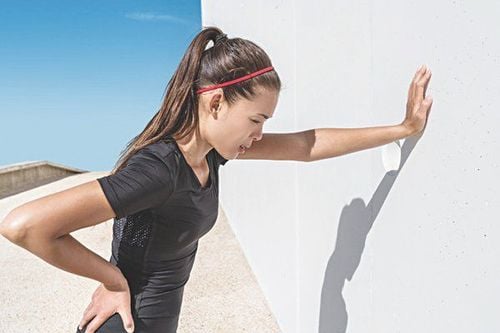
Say nắng thường xuất hiện vào thời điểm giữa trưa
3. Favorable factors
Exercise and work in a hot environment; No air conditioning or ventilation; Wearing inappropriate clothing (too thick, tight, waterproof); Lack of adaptation to climate; Do not drink water, the environment is too hot; Taking certain medications to reduce sweating: beta-blockers, anticholinergics, diuretics, Ethanol, antihistamines; Some medical conditions: extensive burns, endocrine disorders, fever...; Fat; Exhausting salt water; Live alone; Too old or too young.
4. Signs to recognize when suffering from heatstroke, heatstroke
There are two main features of hyperthermia and CNS symptoms. The classic symptoms are hyperthermia > 40°C and neurological dysfunction occurring suddenly in 80% of cases. Symptoms may be subtle and include impaired judgment, odd gestures, hallucinations, altered consciousness, confusion, disorientation and coma, and seizures.
The patient may sweat, although no sweating is the classic symptom (appears in the late stage); Physical examination: note that in any patient with hyperthermia accompanied by CNS signs and a history of exposure, heatstroke is suggestive and requires immediate treatment; Temperature is usually over 41 degrees Celsius but can be normal or slightly elevated if hypothermia occurs before hospital arrival; Patients may have circulatory symptoms such as tachycardia, hyperventilation, hypertension, decreased diastolic blood pressure, and decreased systemic vascular resistance. There may be tachyarrhythmias in response to cardioversion; Central nervous system dysfunction such as convulsions, coma, delirium, hallucinations, spasticity, cerebellar dysfunction, pupillary constriction or dilation; coagulopathy, conjunctival hemorrhage, bloody diarrhea, hematuria, and cerebral hemorrhage; Warm, dry skin or profuse perspiration. Sweat retention only appears in the late stage and is more common in heatstroke - classic heat stroke; Rapid breathing, alkaline blood, compensatory breathing when there is acute respiratory failure; Hematuria, oliguria, anuria, leading to acute renal failure; Note heat stroke does not have muscle stiffness, there may be muscle cramps.
5. Treatment and prevention of heatstroke and heatstroke
5.1 Out-of-hospital management
Immediate cooling and organ support; Remove the patient from a hot environment, remove clothing, move to a shaded area, get into a cool car or cool house; Support airway, breathing, circulation by placing intravenous lines, breathing oxygen, ventilator support if indicated; Immediate cooling by any means available but immediate hospitalization if heatstroke is suspected; Apply warm water on the patient, then use a fan to increase the evaporation process; Apply ice packs on the patient's neck, armpits and groin; Transfer the patient in an air-conditioned vehicle or open a window. 5.2 Treatment in the emergency department
All heatstroke patients are required to be admitted to the hospital for monitoring.
Quickly stabilize the airway, support breathing and circulation. Administer oxygen and crystalloid fluids when undressed and core temperature measured; Use aggressive cooling measures to limit target lesions. The ideal is to reduce the temperature by 0.2 degrees C/min. Should stop when the temperature is 38 degrees; Evaporative cooling is safe, effective, easy to implement, well adapted: remove the patient's clothing, wipe with warm water, then blow with a fan or use 15°C cool steam followed by 45°C warmer C; Use ice or immerse the patient in a cold bath. Although this method is effective quickly, there are many complications such as peripheral vasoconstriction, blood shunt, tremor. In addition, it is uncomfortable for the patient and easy to cause excessive hypothermia. Another supportive measure is to place ice packs on the neck, armpits, and groin. Using rubbing alcohol to cool is outdated and dangerous if used on young children. The elderly are less adapted to temperature and have many comorbidities, so cardiovascular monitoring, regular assessment and careful fluid resuscitation are required.
Use a dedicated hypothermia machine that can surface cooling such as Criticool, ArticSun or Thermogard intravascular hypothermia. After controlling the temperature, it is necessary to re-evaluate immediately and consider a cranial CT scan to exclude central nervous system damage such as cerebral bleeding, cerebral edema... In heatstroke, the rate of damage can reach up to 20% of patients.
6. Measures to prevent heatstroke and heatstroke
When you have to go out in the hot sun, you need to cover your body by wearing loose, light and light-colored clothes, wearing a wide-brimmed hat, and using sunscreen. Drink enough water when it's hot or you have to work hard in the hot sun. Drink water often, even if you don't feel thirsty. You can pipe water with a little salt or drink oresol solution, fruit juice, stay away from carbonated soft drinks, energy drinks. Do not work too long in the sun or work in a hot environment, avoid strenuous physical activities. It is recommended to periodically rest after about 45 minutes or 1 hour of continuous work in a hot place, rest in a cool place for 10-15 minutes. Always fully equipped with sun protection and anti-heat equipment when working or working in the sun such as workwear, protective hats, wide-brimmed hats, sunglasses... Cooling the working environment , especially in factories, tunnels, kilns... are very important in preventing heatstroke and heatstroke. When you have just come back from the sun, this is the time when the body produces a lot of sweat, high body heat, if you take a bath right away, it will cause a sudden change in body temperature, which is very dangerous, which can lead to a stroke. In the hot season, we need to drink a lot of water, eat cool foods, vegetables containing a lot of potassium such as jute vegetables, spinach, gotu kola, tomatoes..., wear loose, airy clothes , easy to sweat. Do not leave children or anyone in a car parked, turned off, in hot weather even for a short time, because the temperature in a car can rise by more than 11 degrees Celsius in just 10 minutes.

Sử dụng kem chống nắng khi ra đường




